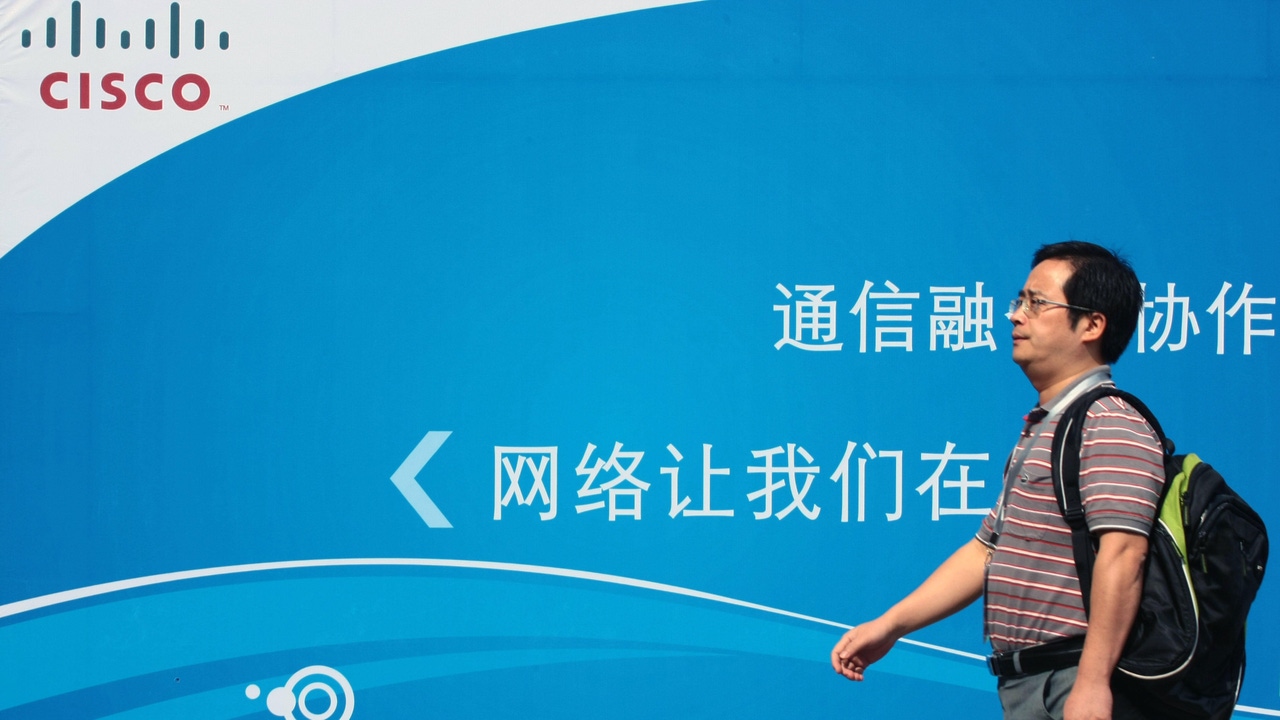Salt Typhoon Exploits Cisco Devices in Telco InfrastructureSalt Typhoon Exploits Cisco Devices in Telco Infrastructure
The China-sponsored state espionage group has exploited known, older bugs in Cisco gear for successful cyber intrusions on six continents in the past two months.
February 14, 2025

The Chinese advanced persistent threat (APT) known as Salt Typhoon has targeted more than a thousand Cisco devices located within the infrastructures of telecommunications companies, internet service providers (ISPs), and universities.
Salt Typhoon (aka RedMike, Earth Estries, FamousSparrow, GhostEmperor, and UNC2286) first made its name last fall, with explosive reports about its targeting major US telecommunications providers like T-Mobile, AT&T, and Verizon. In the process, it managed to eavesdrop on US law enforcement wiretaps, and even the Democratic and Republican presidential campaigns.
Apparently, all that new media attention did little to slow it down. According to Recorded Future's Insikt Group, Salt Typhoon — which Insikt tracks as "RedMike" — attacked communications providers and research universities worldwide on six occasions in December and January. The group exploited old bugs in Cisco network devices to infiltrate its targets, and this may not actually be the first time it tried this tactic.
In a statement to Dark Reading, a Cisco spokesperson wrote that "We are aware of new reports that claim Salt Typhoon threat actors are exploiting two known vulnerabilities in Cisco devices relating to IOS XE. To date, we have not been able to validate these claims but continue to review available data." They added that "In 2023, we issued a security advisory disclosing these vulnerabilities along with guidance for customers to urgently apply the available software fix. We strongly advise customers to patch known vulnerabilities that have been disclosed and follow industry best practices for securing management protocols."
Salt Typhoon's Latest Attacks on Elecom, Unis
Back in October 2023, Cisco urged all of its customers to immediately pull all their routers, switches, etc., off the Web — at least those running the IOS XE operating system. An attacker had been actively exploiting a previously unknown vulnerability in the user interface (UI) which, without prior authorization, allowed them to create new local accounts with administrative privileges. The issue was assigned CVE-2023-20198, with the highest possible score of 10 out of 10 on the Common Vulnerability Scoring System (CVSS).
Just a few days later, Cisco revealed a second IOS XE web UI vulnerability that was being exploited in tandem with CVE-2023-20198. CVE-2023-20273 took the first vulnerability a step further, allowing attackers to run malicious commands on compromised devices using root privileges. It earned a "high" 7.2 CVSS score.
Evidently, Cisco's warnings were not heard loudly and widely enough, as Salt Typhoon followed this exact path to just recently compromise large organizations on six continents. With the complete power afforded by CVE-2023-20198 and CVE-2023-20273, the threat actor would then configure Generic Routing Encapsulation (GRE) tunnels connecting compromised devices with its own infrastructure. It used this otherwise legitimate feature to establish persistence and enable data exfiltration, with less risk of detection by firewalls or network monitoring software.
Though Insikt tracks this campaign only back through December, it's possible that this isn't the first time Salt Typhoon has used Cisco devices to target major telcos.
"Very little detail is currently publicly available about the Salt Typhoon-linked intrusions against US telecommunications providers uncovered in September 2024, including whether or not Cisco devices were involved," explains Jon Condra, senior director of strategic intelligence at Recorded Future. "Notably, CISA in December 2024 put out defensive guidance for communications providers that implies that Cisco devices have been exploited, linked to the Salt Typhoon intrusions, without providing specifics. We do know that Cisco devices have been targeted by Chinese APT groups on many occasions in the past, as with a variety of other edge devices."
Salt Typhoon's Latest Cyberattack Victims
Organizations affected by this campaign include a US affiliate of a UK telco, a US telco and ISP, an Italian ISP, a South African telco, a Thai telco, and Mytel, one of Myanmar's premier telcos.
"Salt Typhoon targets telecommunications systems which are some of the most complicated Frankenstein-esque examples of architectures that exist," explains Zach Edwards, senior threat researcher for Silent Push. That even old vulnerabilities might still be exploited against telcos, he suggests, isn't such a mystery: "They possess some technologies in certain systems dating back decades that, in many cases, cannot be replaced, and with other modernized aspects that remain vulnerable to sophisticated attacks."
And besides telcos and ISPs themselves, Salt Typhoon also attacked 13 universities, including the University of California, Los Angeles (UCLA) and three more US institutions, plus more in Argentina, Indonesia, the Netherlands, etc. As Insikt noted, many of these universities perform significant research in telecommunications, engineering, and other areas of technology.
Overall, while more than 100 countries have been touched by this campaign, more than half of the devices compromised have been in South America, India, and, most often, the US.
Recorded Future's Condra emphasizes that while prior Salt Typhoon coverage has been US-centric, he says, "The group’s targeting extends far beyond US borders and is truly global in scope. This speaks to strategic Chinese intelligence requirements to gain access to sensitive networks for the purposes of espionage, gaining the ability to disrupt or manipulate data flows, or pre-position themselves for disruptive or destructive action in the event of an escalation of geopolitical tensions or kinetic conflict."
About the Author
You May Also Like
Securing the Remote Workforce
Feb 20, 2025Emerging Technologies and Their Impact on CISO Strategies
Feb 25, 2025How CISOs Navigate the Regulatory and Compliance Maze
Feb 26, 2025Where Does Outsourcing Make Sense for Your Organization?
Feb 27, 2025Shift Left: Integrating Security into the Software Development Lifecycle
Mar 5, 2025




_vska_Alamy_.jpg?width=700&auto=webp&quality=80&disable=upscale)